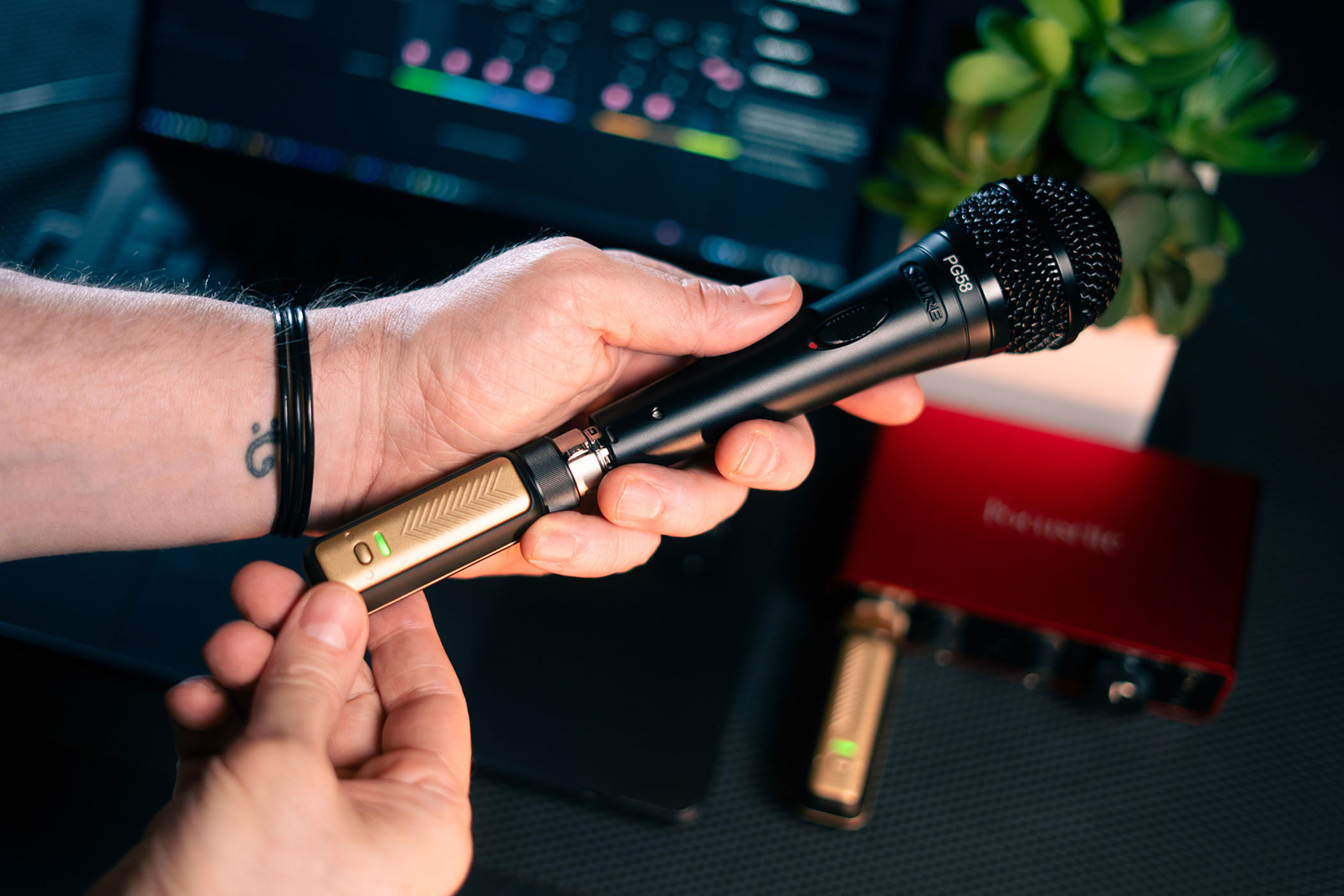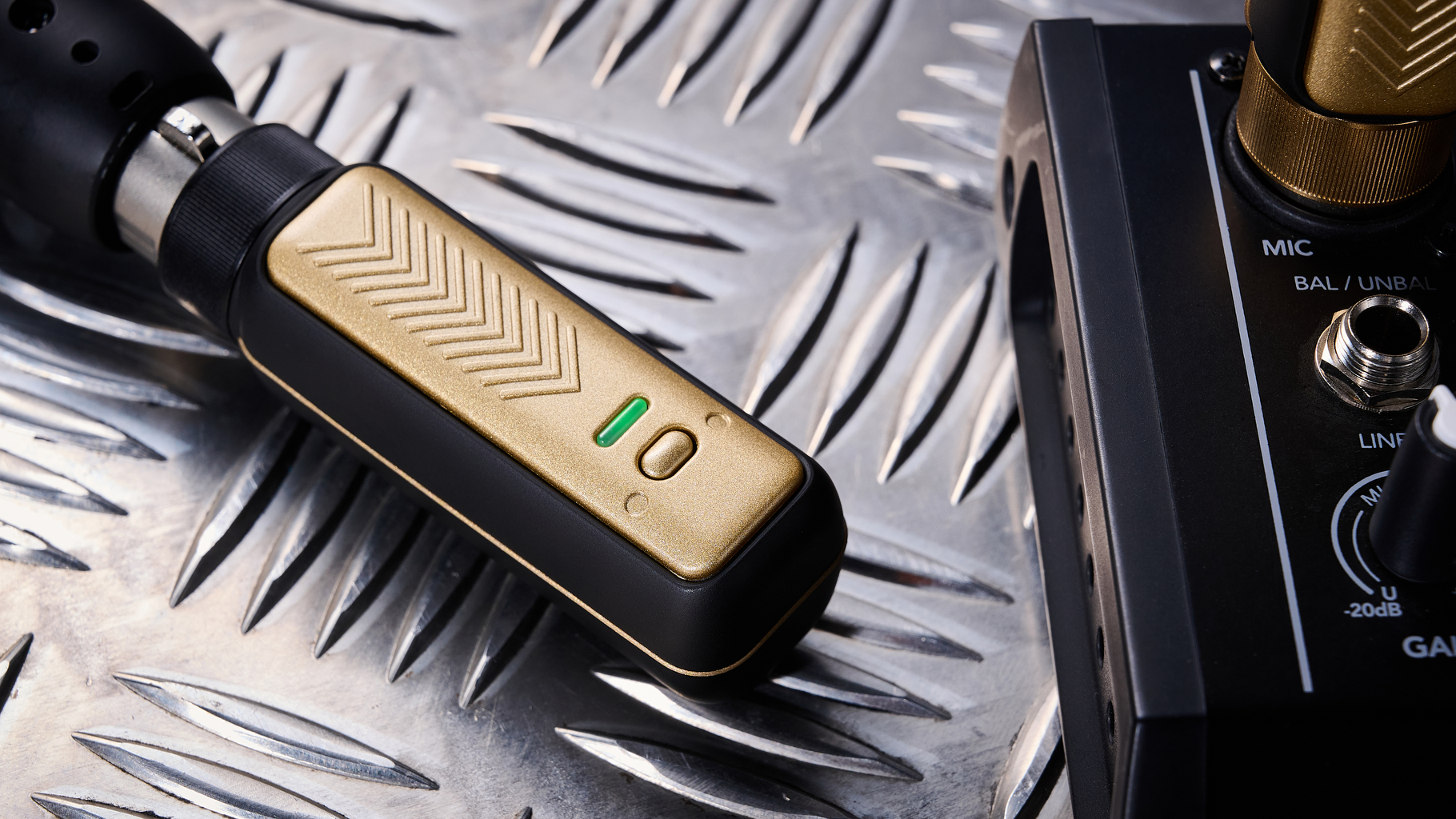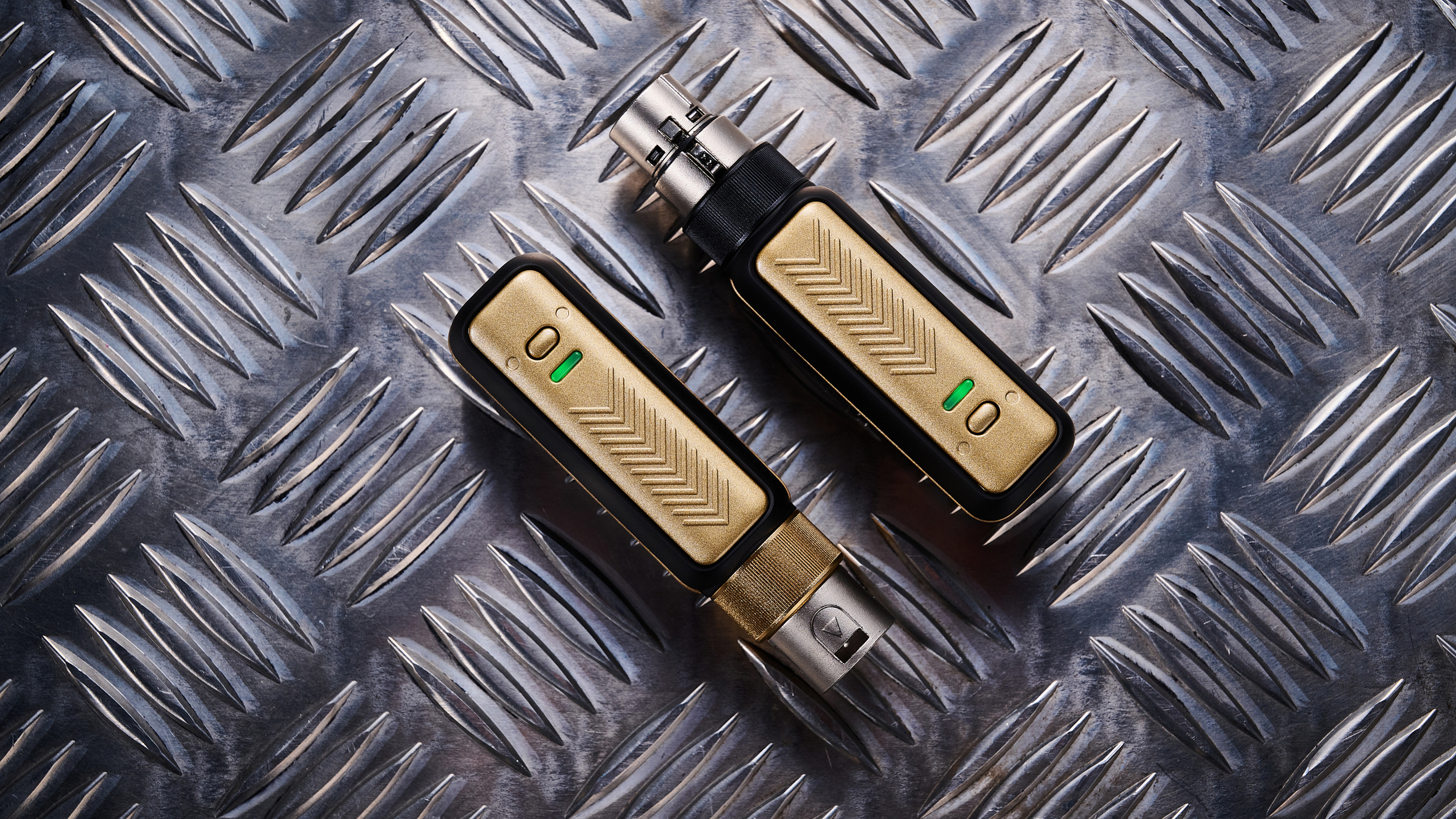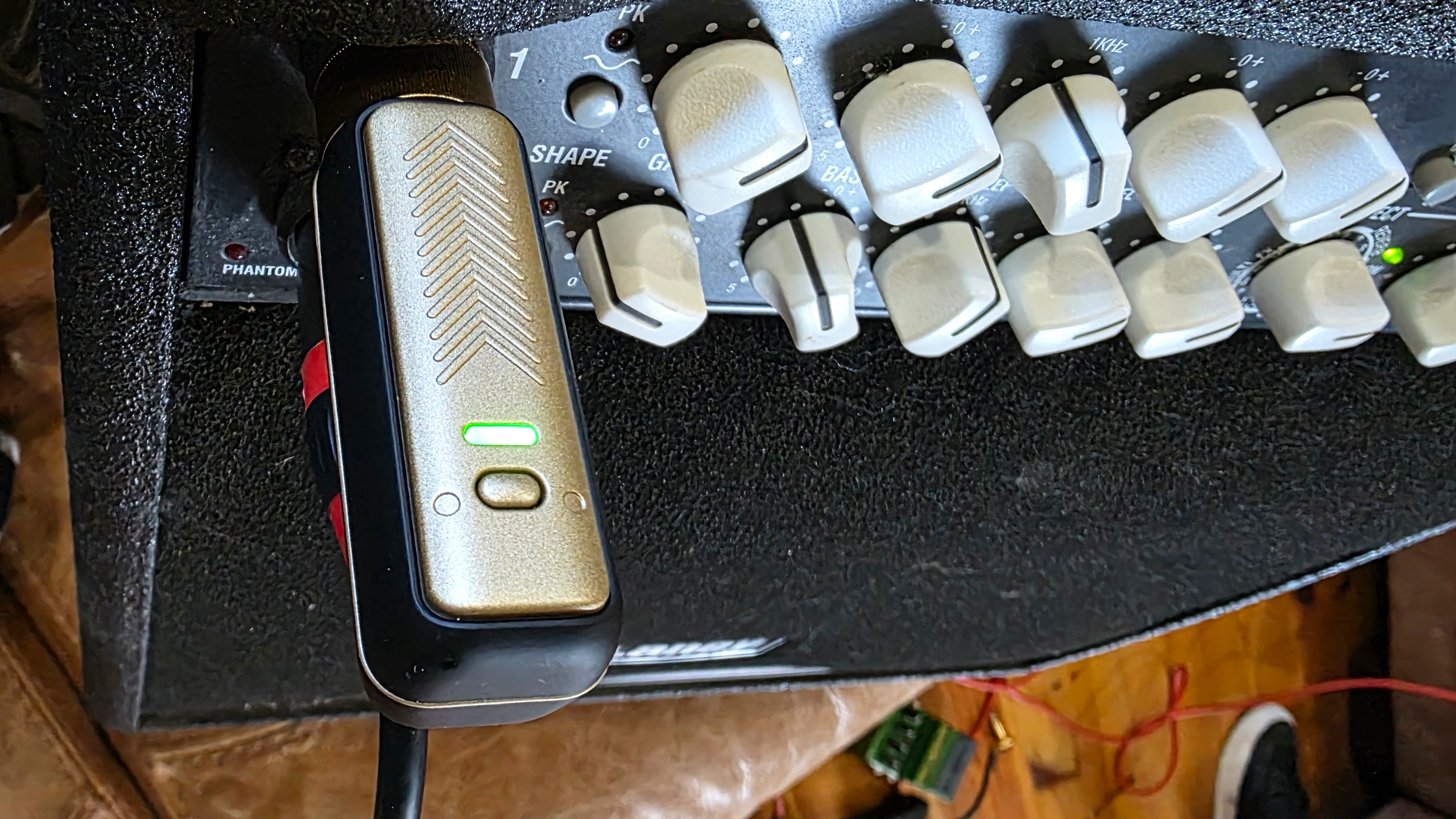MusicRadar Verdict
The LINK XLR represents competitive value in the market for vocalists, and is a good way to go wireless – especially as an alternative to a full-blown digital wireless mic rig.
Pros
- +
Low latency
- +
Excellent, clear audio performance.
- +
Decent battery life with idle shutdown.
Cons
- -
If you need to take the mic on or off the stand, you'll have to disconnect.
- -
Some may prefer 5.8GHz frequency and need a longer operating range.
- -
The LED battery status range could be more accurate.
MusicRadar's got your back
What is it?

While its FRFR Spark Cab signalled Positive Grid's ambitions for its Spark range beyond the home, the Spark LINK wireless guitar system in early 2024 was a clear step beyond amplification and software for the company. The LINK XLR system is now a step further outside expectations - aimed predominantly at vocalists.

• Launch price: $169 | £149 | €179
• Type: XLR wireless system for dynamic microphone
• Features: 24-bit/48kHz audio quality, 500mAh internal rechargeable batteries offering up to 7 hours of continuous use. less than 3ms latency, 20Hz ~ 20kHz frequency response, 103.7dB dynamic range, 2.4GHz wireless band functionality, up to 4 channels, up to 21 metres (70ft) line of sight range
• Contact: Positive Grid
The LINK XLR is designed for dynamic microphones, and features internal rechargeable batteries for its transmitter and receiver – up to seven hours of battery life from a single charge via USB-C . It can also be used with other XLR devices with a mic level out, but is not compatible with those that require phantom power.
Positive Grid states 24-bit/48kHz audio with 103.7dB dynamic range and a stable 2.4GHz wireless connection. Up to four LINK systems can be used in one area and a sight line distance of 21 meters of wireless range is claimed, so I'll be putting all that to the test in a couple of band rehearsals.
It'll be my first as a vocalist/guitarist with a wireless mic, and I thought I'd commit further with a wireless guitar system by borrowing Positive Grid's LINK system for guitar too. Let's plug in!
Specs

- Launch price: $169 | £149 | €179
- Type: XLR wireless system for dynamic microphone
- Audio quality: 24-bit/48kHz
- Latency: Less than 3ms
- Frequency response: 20Hz ~ 20kHz
- Dynamic range: 103.7dB
- Wireless band: 2.4GHz
- Channels: 4
- Distance range: Up to 21 metres (70ft) line of sight
- Power: 500mAh internal rechargeable batteries offering up to 7 hours of continuous use, 5V 1A or higher USB-C charger required
- Dimensions: L x H x W Transmitter 98.99mm x 27.6mm x 25.4mm
Receiver: 93.96mm x 27.6mm x 25.4mm - Weight: Transmitter 55.9g Receiver 50.7g
- Contact: Positive Grid
Usability and sounds

I'm not exactly old school with guitar gear, but on reflection, a pattern has emerged between me and some areas of technology. I was later than most in abandoning wired headphones for Bluetooth with my listening, and I had an MP3 player when everyone else had already switched to streaming services on their phones. Even when I'm tripping over cables in my testing space, I still haven't tried going wireless with my guitar.
So this is a great opportunity for me to embrace a new approach to see if it convinces me. And first impressions are good; the LINK XLR system couldn't be simpler.
A receiver and transmitter are in the box, along with a braided gold and black USB-C to USB-C Y charging cable to enable both to be charged at once (charging time from empty to full is around two hours).
Want all the hottest music and gear news, reviews, deals, features and more, direct to your inbox? Sign up here.
The colour scheme is now a familiar site for anyone who has used the Spark range of practice amps as well as the larger units – and I've reviewed a couple myself. The matte black is sleek but if you're looking for stealthy and low key, the gold plastic front panels of the transmitter and receiver aren't quite that vibe. But they are distinctively Positive Grid Spark.
The matte finish isn't ideal for avoiding scratch marks from general use either, but they only show close up and directly under light. The casing itself feels sturdy enough – though I wouldn't call it rugged like PG's Go amp – and with a pairing button / LED combo on the front and USB-C port on the back, along with a recessed reset button, it's all a simple plug-in-and-play deal. Though Positive Grid does provide a downloadable user guide on a scannable code.

Helpfully, the transmitter will power down if no signal is detected for 15 minutes to conserve battery life
When the receiver and transmitter are turned on they'll flash blue and then pair, the next colour their LEDs show will depend on battery status; green for battery level 16%-100%, yellow for 5%-15% and red when the battery is below 5%. So that green range is quite wide and something you can't really assume to rely upon as a 'good to go' colour ahead of a lengthy practice session or gig. I would have expected a narrower range so you'll really need to keep a mental note of usage time to be safe.
Helpfully, the transmitter will power down if no signal is detected for 15 minutes to conserve battery life, and the receiver 15 seconds later. This occurred a couple of times over the two band rehearsals I tested the LINK XLR for when we took breaks.
The quoted latency of "as low as 3ms" checks – throughout the practice sessions I was never really conscious of any difference to my usual wired performance with my trusty ol' Shure SM58 until one specific issue elsewhere…
When I'm not playing guitar on certain songs in the grunge covers band I'm singing for, I sometimes take my microphone off the stand. It feel like it helps me with certain demanding songs, but with the Spark LINK XLR fitted it's not possible to take the mic off its usual holder without removing the transmitter first. Any vocalists who want to take their mic off the stand mid-performance are going to find this a potential obstacle. But this isn't a unique issue to the Spark LINK XLR.
I tried the Spark LINK XLR with a Zoom LiveTrak L-20R digital mixer running three XTUGA IEM1200 wireless in-ear monitor systems (including my own), and also separately with my Laney A1+ acoustic combo serving as a portable PA.

The stated 21-metre maximum range wasn't possible to test in the rehearsal situation I was in, due to walls impeding the radio signal – but a test outside confirmed its accuracy. I can say the same for the seven-hour battery life – the Spark LINK XLR lasted through both rehearsal situations I used it for.
Using it alongside the loaned LINK system for my guitar, I didn't encounter any signal issues or dropouts with both using 2.4GHz transmission – both LINKs were able to take advantage of the maximum of four exclusive channels available. Indeed, the performance was so seamless I will probably be investing in a wireless guitar system for home and live use too soon.
Verdict
Verdict: ★★★★☆
The main potential issue with the LINK XLR are for those vocalists who want to be able to easily hold their mic and return it to the stand via a holder. Because the transmitter essentially blocks the mic from getting free of the holder without it being removed first. This is not an unusual issue for wireless mic systems, and a question for individual users at how much of an issue it will be. But in terms of audio and signal performance, the LINK XLR delivers everything I would want as a vocalist with the only caveat being remembering to recharge it!
But I say that as someone who will only be playing smaller gigs. While its line of sight distance range is under some of the pricier competition, including Boss, Sennheiser and Xvive, and it doesn't offer the larger 5.8GHz band functionality of some, the Spark LINK XLR's battery life and performance stack up for the price and should deliver for a lot of gigging vocalists in smaller venues out there.
MusicRadar verdict: The LINK XLR represents competitive value in the market for vocalists, and is a good way to go wireless – especially as an alternative to a full-blown digital wireless mic rig.
Hands-on videos
Positive Grid
- Launch price: $169 | £149 | €179
- Type: XLR wireless system for dynamic microphone
- Features:
- Contact: Positive Grid

Rob is the Reviews Editor for GuitarWorld.com and MusicRadar guitars, so spends most of his waking hours (and beyond) thinking about and trying the latest gear while making sure our reviews team is giving you thorough and honest tests of it. He's worked for guitar mags and sites as a writer and editor for nearly 20 years but still winces at the thought of restringing anything with a Floyd Rose.
You must confirm your public display name before commenting
Please logout and then login again, you will then be prompted to enter your display name.

